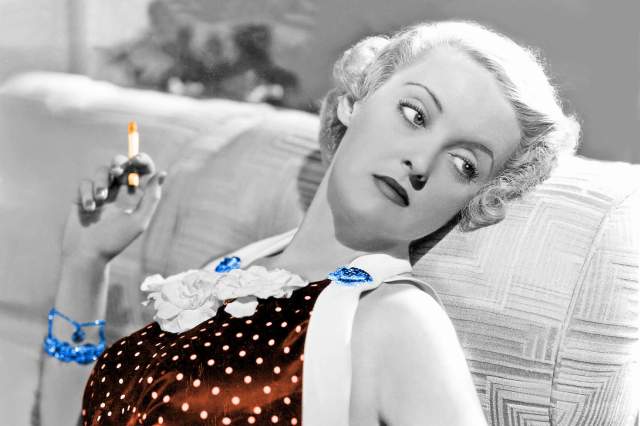
Bette Davis Started Her Career on the Stage
Bette Davis got her start on the stage after developing an interest in acting at a finishing school, Cushing Academy in Massachusetts. However, when she applied in 1928 to take classes in New York with renowned director and actress Eva Le Gallienne, the latter rejected her as “a frivolous little girl.” She then became a star pupil at John Murray Anderson’s dramatic school and joined a stock theater company operated by George Cukor, who would later direct dozens of Hollywood hits. In 1929, she earned rave reviews for the Broadway hit Broken Dishes. The following year, a scout for Universal Studios saw her in Solid South and invited her to screen test.

Davis Failed Multiple Hollywood Screen Tests
Her first Hollywood screen tests did not go very well. Davis arrived in Hollywood with her mother, but the studio representative sent to meet her at the train left because he claimed not to see anyone who looked like an actress. A movie executive watched one screen test and announced she had no sex appeal. In others, she was rejected because of crooked teeth. She even once recalled fleeing the room, screaming, after seeing herself on-screen. Universal eventually offered her a contract, but she was given small, forgettable roles. Davis was preparing to return to New York when Warner Bros. offered her a contract — and then she was on her way to stardom.

She Fled the U.S. and Was Sued by Warner Bros. Studio
Davis soon developed a reputation for being strong-willed. Although she got better parts with Warner Bros. and was the studio’s first Best Actress Academy Award winner, she became frustrated with male stars getting better opportunities. She also hated the studio deciding when and where she could work. In 1936, she went to the U.K. to make two films, a move that caused Warner Bros. to sue her for breach of contract. She ultimately lost the case and returned to Hollywood. However, the case did lead to her getting more respect, with a new contract from Warner Bros. and better roles.
More Interesting Reads

Davis Had a Famous Feud with Joan Crawford
One of Bette Davis’ most memorable later roles was in What Ever Happened to Baby Jane? (1962). The feud between her and co-star Joan Crawford was mirrored by their on-screen loathing of one another. Crawford had been married to a Pepsi executive and was on the company’s board, and so Davis insisted on a Coke machine being installed in her dressing room during the production, among other episodes. By some accounts, Davis hit Crawford so hard in one scene that Crawford required stitches. Davis was nominated for an Academy Award, but Crawford actively campaigned against her. It was Crawford who accepted the Oscar on awards night — on behalf of Anne Bancroft, who could not be there to accept it in person. In later years, both actresses spoke of their respect for each other, although Davis criticized Crawford’s vanity.

Davis Shares the Record for Most Consecutive Academy Award Nominations
Davis is one of two actresses with five consecutive Academy Award nominations. She shares the honor with Greer Garson, who beat Davis to win for Mrs. Miniver (1942). In 1962, she became the first person to have been nominated for 10 Oscars, a feat surpassed only by Meryl Streep, Katharine Hepburn, and Jack Nicholson. A write-in campaign for her part in Of Human Bondage (1934) adds another, unofficial, nomination. She won the Best Actress Award for Dangerous (1935) and Jezebel (1938). A win for What Ever Happened to Baby Jane? would have made her the first three-time winner in a non-supporting category.

She Was the First Woman to Receive the American Film Institute Life Achievement Award
In 1977, Bette Davis became the fifth (and first female) recipient of the Life Achievement Award from the American Film Institute. The award is given to a performer “whose work has stood the test of time.” In announcing her as the winner, the AFI said, “She is that rarest of creatures — the consummate professional.” By the 1970s, she was still doing some movies, including Death on the Nile (1978). She was also taking more television roles. Davis continued to act through the 1980s, despite a stroke and breast cancer. Her final role was with fellow Hollywood veteran Lillian Gish in The Whales of August (1987). Davis died in France two years later.












